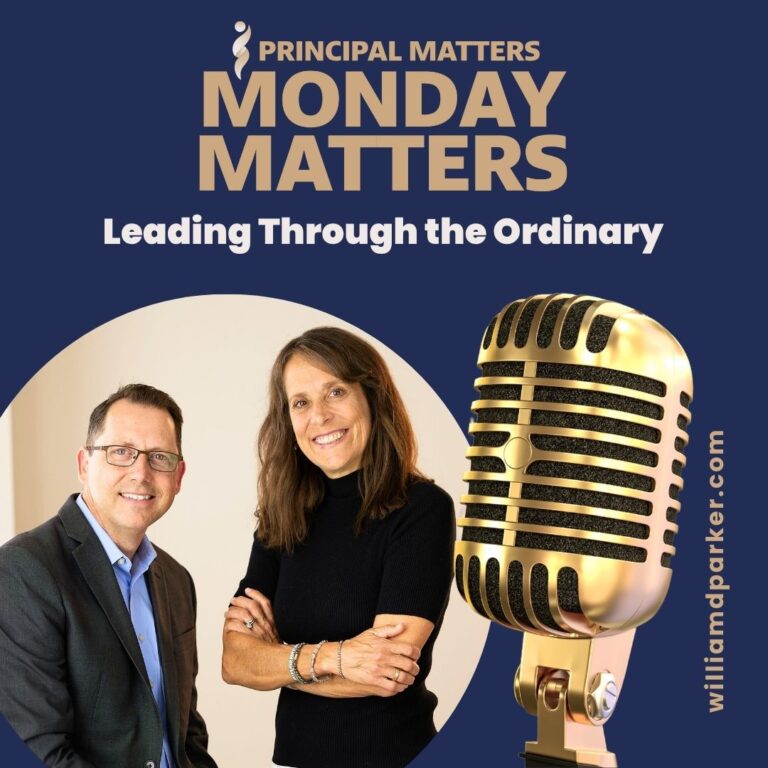Podcast: Play in new window | Download
In 2016, a Pew Research report showed 62% of adults receive news via social media – a 49% increase from 2012.

70% of people in western countries use social networks like Facebook or Twitter. Only 30% do not rely on social media in the U.S. and that percentage continues declining.
Although access to information does not guarantee accurate information, it is undeniable that schools will not reach communities if they fail to engage them through the use of technology. Simon Mainwaring once said, “Social media is not about the exploitation of technology but service to the community.”
Recently, I hosted a final webinar episode from my book Messaging Matters: How School Leaders Can Inspire Teachers, Motivate Students, and Reach Communities. You can check out the video and slides here. The discussion includes three parts:
Part 1: Building a platform with technology
Part 2: Launching a school email campaign
Part 3: Publicizing celebrations
Part 1: Building a Platform with Technology
Consider these six ways educators can create platforms for sharing ideas with school communities:
- Writing blog posts
- Creating podcasts
- Hosting webinars
- Using LinkedIn
- Using Facebook
- Using Twitter
Writing Blog Posts
Think about ways to share topics within and outside your community. Blogs can be informal, conversational ways to share lessons. Here are some sample topics to think about:
• How to prepare for the first days of school
• Books or articles of best practices in the classroom
• How new legislation may affect school practice
• What new school services or programs are coming
• Ways to stay inspired certain times of the year
Want to learn how to blog? Check out Michael Hyatt’s free tutorial How to Launch a Self-hosted WordPress blog in 20 minutes or less.
Creating a Podcast
Listen to podcasts for learning and think about creating your own. Here are some of my favorites:
- 10-Minute Teacher by Vicki Davis www.coolcatteacher.com/podcast
- Transformative Principal with Jethro Jones www.tranformativeprincipal.org
- Principal Center Radio with Justin Baeder www.principalcenter.com/radio
- Better Leaders Better Schools with Daniel Bauer http://betterleadersbetterschools.com
Thinking about starting your own? Check out Pat Flynn’s “How to Start a Podcast: Pats Complete Step-by-Step Podcasting Tutorial” (6-part series for free on Youtube).
Hosting a Webinar
Platforms like Zoom.us or GoToMeeting.com are great for hosing webinars. Other ways some people connect via live video shares include Google Hangouts, FaceTime, Skype, Facebook Live, or Instragram Live. Think about ways to share ideas through these live conversations on topics like the following:
• How you have structured or organized a new initiative or program
• What performance goals you have set for your team
• How to deal with a difficult situation or implementation
• Updates on resolving current challenges or upcoming events
Using Social Media
Whether it is through LinkedIn, Facebook, Twitter or Instagram, think of ways to keep your community informed with images and updates. Share photos or articles of interest. Don’t be afraid to duplicate or repurpose content among all these different platforms. Consider sharing content by using hashtags—a way for others to share like content. For educators, I suggest hashtags like #satchat, #atplc, #edugladiators, #edchat, #eduleader, or #leadered. Some hashtags are location centered, like #okaled in Oklahoma.
Ask these questions for reflection:
1. What is one new way you can commit to sharing lessons happening in your school?
2. In what ways can you increase shares of practical examples of learning, leadership, or instruction?
3. If you had to choose one new tool for platform building, what would you choose?
Part 2: Launch a school email campaign
Another way to reach community members is by a consistent information sharing campaign through free websites like Mailchimp.com or Constant Constant. Our school used the free website, Mailchimp.com, for subscription emails.
The benefit of subscription-based emails is the ability to track opens and clicks in order to see how many patrons are really interacting with information received. Other platforms for mass communication involve free resources like School Messenger or Remind. Some educators build beautiful newsletters using Smore.com.
Our school shared a weekly summary with parents that became a great way to summarize all the events from the previous week and updates on upcoming events in a consistent weekly share. When you have a consistent schedule for sharing, you can often drive the conversations about school happenings, anticipating questions before they are asked about upcoming events.
Here are some questions to consider about using an email campaign:
- How can you tie a subscription based email into the current website or network you have in place?
- Is there someone on your team who can handle the technical aspects of a campaign?
- How can you play an active role in deciding what positive news to share that matches your goals, vision or mission?
Part 3: Publicizing Celebration
Your community needs to hear consistent, positive happenings from your school in order to remind them of the benefits and growth students are receiving. How can you drown out the negatives often shared with the positive ones instead? Here are four suggestions:
- Creating promotional videos. Powtoons and Bitebable.com are free websites for creating promotional.
- Collecting data on current events, testing, or student growth to share.
- Providing consistent recognition of students, teachers, and groups.
- Hosting fundraiser or events that recognize good behavior for finishing strong at the end of term or semester.
Let’s Wrap This Up
We just finished watching a lot of great basketball during the month of March. Just like in a great basketball game, when it comes to communication, you must stay open, talk to your teammates, offer assistance, anticipate what is next, identify your strengths or opportunities, and stay in control where you can.
Building platforms, utilizing social media tools, creating campaigns, and encouraging celebrations are not actions you should take alone, but they are actions where you can lead by example.
Now It’s Your Turn
What are some ways you can promote good deeds or student successes this week to your school community? How can you use technology tools to highlight the reasons why students and teachers are experiencing great learning in your school? Don’t become overwhelmed with all the options. Just choose one new tool to add to your technology toolbox of messaging.
Sign-Up For Free Updates and Ebook
When you enter your email address below, you will automatically receive my newest posts and a free Ebook, 8 Hats: Essential Roles for School Leaders. Let’s keep learning together!
Subscribe for free weekly updates and receive free e-book!
(function($) {window.fnames = new Array(); window.ftypes = new Array();fnames[0]=’EMAIL’;ftypes[0]=’email’;fnames[1]=’FNAME’;ftypes[1]=’text’;fnames[2]=’LNAME’;ftypes[2]=’text’;}(jQuery));var $mcj = jQuery.noConflict(true);
Principal Matters–The Book!

School leaders are very busy, so each of the twenty-four chapters is designed as a quick-read and followed with take-action questions for follow-up or reflection. If you want practical ideas on understanding your purpose, managing school teams, dealing with challenges, and leading with courage, action, motivation, and teamwork, go HERE to pick up a copy for you or your team.
Messaging Matters

Harness the power of messaging to create a culture of acknowledgment, respect, and celebration. Written specially for leaders, this title is divided into three parts, helping readers to maximize their role as chief communicators with students, teachers, and parents and community. Each chapter includes suggestions for using digital tools to enhance messaging and ends with reflection questions and practical next steps.




